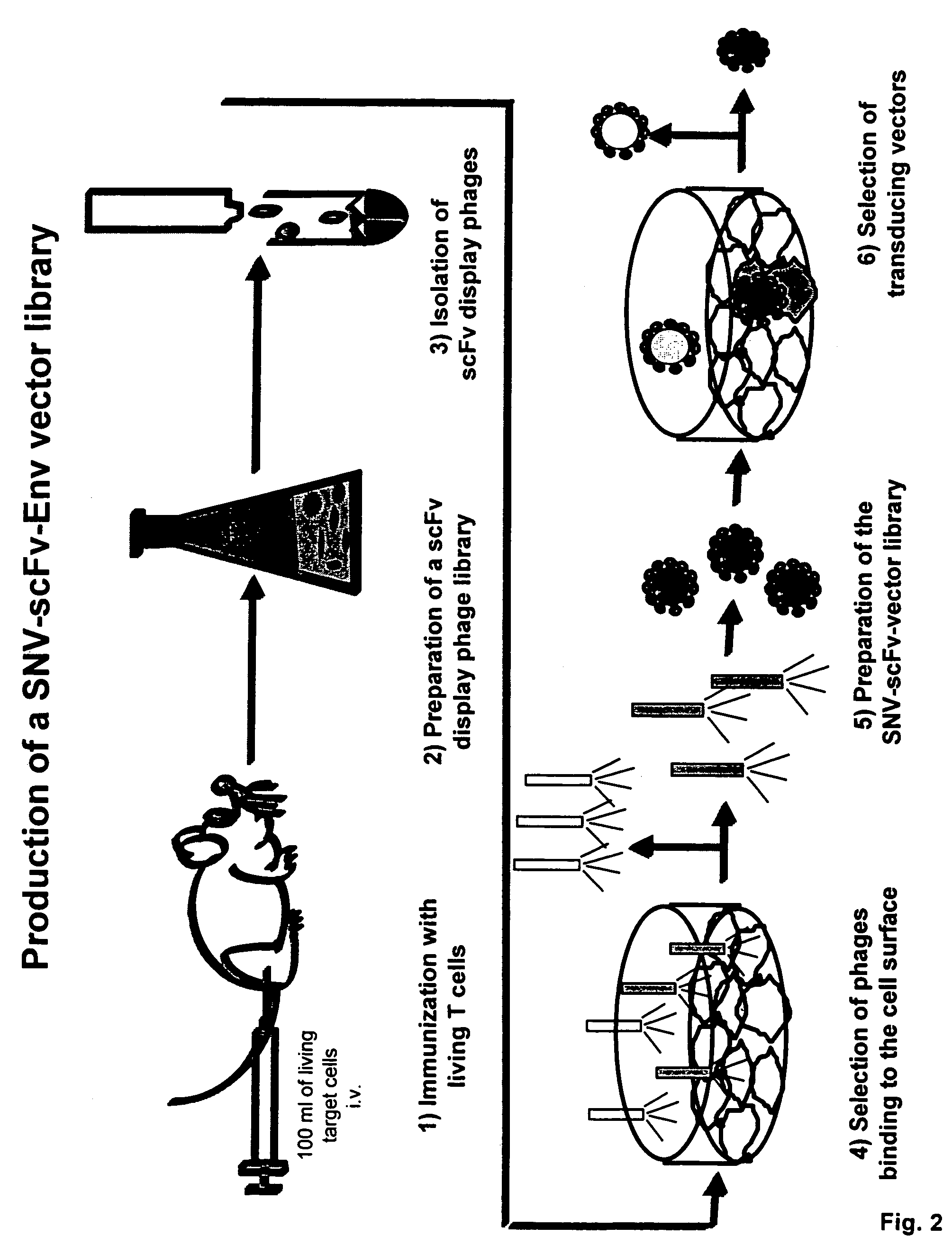Cell-specific retroviral vectors with antibody domains and method for the production thereof for selective gene transfer
a cell-specific retroviral and antibody recognition technology, which is applied in the direction of viruses, immunoglobulins against animals/humans, peptides, etc., can solve the problems of defective transport of su protein to the cell surface, inability to selective gene transfer in particular cell or tissue types of humans or other mammals, and general inability to modify the surface envelope protein of the mlv to enable extensive modifications. , to achieve the effect of improving the gene transfer
- Summary
- Abstract
- Description
- Claims
- Application Information
AI Technical Summary
Benefits of technology
Problems solved by technology
Method used
Image
Examples
Embodiment Construction
[0024]The term amphotropic virus used means infection and replication in murine and human cells, in contrast to an ecotropic virus which only replicates in murine cells. The term retroviral vector used herein means replication deficient retroviral virus particle which instead of retroviral mRNA may transmit a foreign introduced RNA of a gene, e.g. of a therapeutic gene or a fragment thereof or of a reporter gene. The term antibody recognition domain (scFv) used herein means an antigen binding site of an antibody comprising Vh and Vl chain. The term SNV used herein represents spleen necrosis virus with its strains and substrains. SNV belongs to the avian reticolo endotheliosis viruses (REV), type D retrovirus.
[0025]To provide the cell-specific antibody recognition domains (scFv) a new combinatory phage cDNA library of the variable domains of the light and heavy chains of the immunoglobulins is prepared. For this purpose, a mammal, e.g. a mouse, rat, rabbit, guinea pig, goat or sheep ...
PUM
| Property | Measurement | Unit |
|---|---|---|
| volume | aaaaa | aaaaa |
| volume | aaaaa | aaaaa |
| volume | aaaaa | aaaaa |
Abstract
Description
Claims
Application Information
 Login to View More
Login to View More - R&D
- Intellectual Property
- Life Sciences
- Materials
- Tech Scout
- Unparalleled Data Quality
- Higher Quality Content
- 60% Fewer Hallucinations
Browse by: Latest US Patents, China's latest patents, Technical Efficacy Thesaurus, Application Domain, Technology Topic, Popular Technical Reports.
© 2025 PatSnap. All rights reserved.Legal|Privacy policy|Modern Slavery Act Transparency Statement|Sitemap|About US| Contact US: help@patsnap.com



